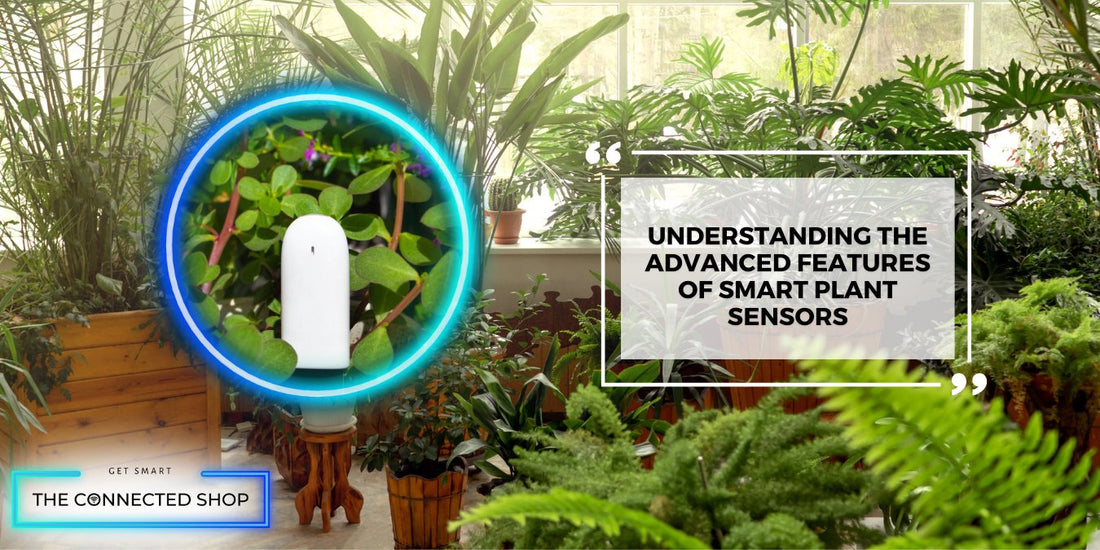With the growing popularity of smart sensors in homes, smart plant sensors are taking center stage for gardening enthusiasts and green thumbs alike. These innovative devices offer real-time data on soil moisture, light levels, temperature, and other critical factors, empowering gardeners to make informed decisions and give their plants the best care.
Let’s explore some essential tips for using smart plant sensors to elevate your gardening game.
Why Smart Plant Sensors Are A Game-Changer
Smart plant sensors are transforming the way we approach plant care, allowing professional gardeners and indoor plant enthusiasts to go beyond guesswork and optimize plant health with precision. Today’s smart plant sensors not only provide insights but also connect with smartphones to deliver alerts and recommendations. By leveraging this data, both novice and experienced gardeners can ensure plants thrive year-round, regardless of weather fluctuations cxzor time constraints.
Key Benefits of Using Smart Plant Sensors
- Efficient Water Management: Overwatering and underwatering are common mistakes, but smart plant sensors can alert you precisely when your plants need hydration.
- Optimized Growth Conditions: With data on light, soil, and temperature, you can adjust your plant’s environment, ensuring they have ideal conditions to grow.
- Simplified Care for Multiple Plants: For those with multiple plants or large gardens, smart plant sensors save time by allowing quick checks on each plant’s condition through a single device.
Top Tips for Getting the Most Out of Your Smart Plant Sensors
To harness the full potential of your smart plant sensors, here are some practical tips that will help you make informed decisions and keep your plants thriving.
1. Select the Right Sensor for Your Plants’ Needs
Not all plants have the same requirements, and neither do all sensors offer the same features. Choose a smart plant sensor that aligns with your specific plants’ needs. For instance, if you’re growing succulents, you’ll want a sensor that focuses on soil moisture and sunlight. For leafy greens or tropical plants, choose a sensor with enhanced humidity and temperature tracking capabilities.
Tip: For outdoor gardens, ensure your smart sensor is weather-resistant and can handle direct sunlight, rain, and temperature swings.
2. Position the Sensor Correctly
The placement of your smart plant sensor is crucial for accurate readings. Insert the sensor close to the plant’s root zone to capture soil moisture effectively, and make sure the sunlight sensor is not shaded by leaves or other plants. If your plant is potted, ensure the sensor is securely placed to avoid shifting.
Tip: Place sensors in different sections of larger garden beds to get a broader understanding of the soil and light variations across your plants.
3. Regularly Check Sensor Data
Consistency is key to making the most of smart plant sensors. Make it a habit to check the data your sensors provide, whether on your smartphone or other connected devices. Regular monitoring allows you to make timely adjustments to water, lighting, or even move plants as seasons change.
Tip: Set up alerts if your sensor has this feature, so you’ll receive a notification if conditions fall outside your plant’s optimal range. Many apps allow you to customize these alerts to avoid overwatering, underwatering, or exposure to extreme temperatures.
4. Adjust Plant Locations Based on Light Levels
Smart plant sensors offer invaluable insights into how much light your plants are receiving. Use this data to adjust your plants' positions, particularly if they’re indoors or placed on a patio. For instance, if the sensor indicates low light, consider moving the plant closer to a window or supplementing with grow lights.
Tip: Light requirements can vary with the seasons, so use your smart plant sensor’s data to make seasonal adjustments and ensure plants continue to get adequate light throughout the year.
5. Leverage Data for Improved Fertilization
Some smart plant sensors monitor soil fertility and nutrient levels, which can guide you in your fertilizing routine. Use this data to apply fertilizers more strategically and avoid over-fertilizing, which can harm plant health. Tracking these nutrient levels over time can also help you understand your plants’ specific requirements better.
Tip: For vegetable and flowering plants, check the nutrient data every few weeks during peak growth periods and fertilize accordingly to maximize yield and blooms.
6. Track Temperature Fluctuations for Sensitive Plants
For plants that are sensitive to temperature, such as orchids, certain vegetables, or tropical plants, the temperature-tracking capability of smart plant sensors can be a lifesaver. These sensors can alert you to temperature drops or spikes, helping you move sensitive plants indoors or cover them to protect them from frost or intense sunlight.
Tip: Use smart plant sensors to monitor microclimates within your garden, allowing you to select the best spots for temperature-sensitive plants based on actual data rather than guesswork.
7. Use the Historical Data for Long-Term Planning
Many smart plant sensors offer historical data tracking, allowing you to understand trends over time. This information is incredibly valuable for planning, as it reveals patterns in your garden that may affect planting schedules, watering frequency, and even crop rotation.
Tip: Review historical data at the end of each growing season to learn how different factors impacted plant health. This can inform adjustments for future gardening seasons.
Conclusion
Smart plant sensors are not just tools; they’re allies in gardening, making it easier than ever to optimize plant care with real-time, data-driven insights. By choosing the right sensor, placing it accurately, and making use of its data, gardeners can create ideal conditions that enhance plant growth and resilience. Whether you’re a beginner or a seasoned gardener, these tips will help you get the most from your smart plant sensors and elevate your green thumb to a new level. As technology continues to evolve, these sensors are only expected to become even more insightful, making gardening an increasingly precise and rewarding pursuit.





